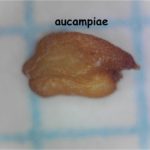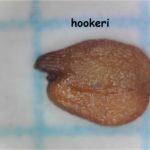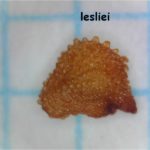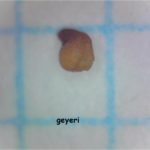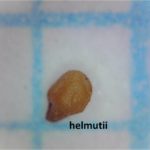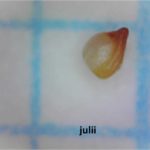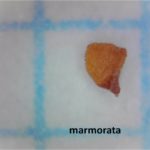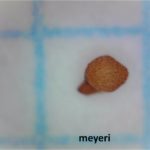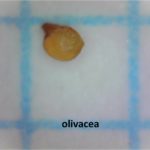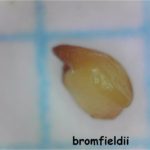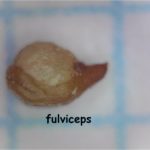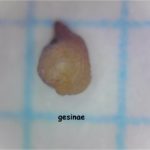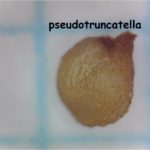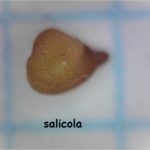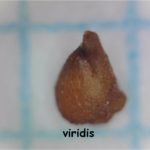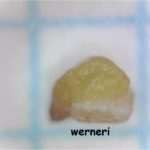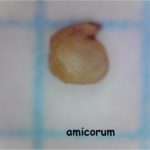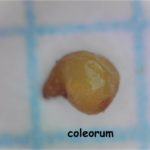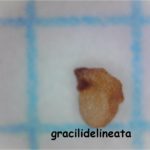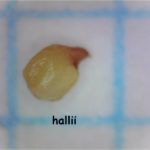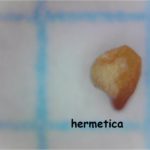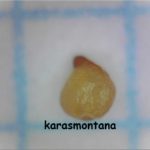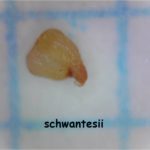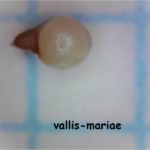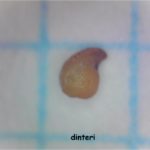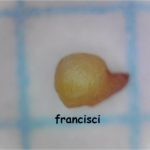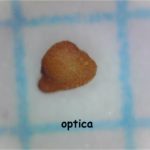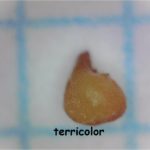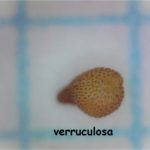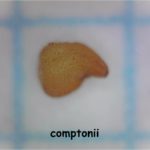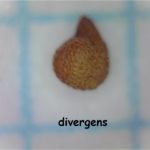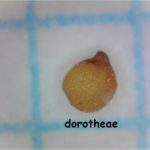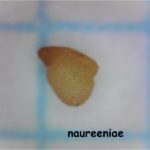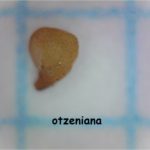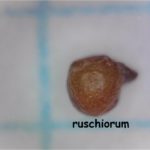Three criteria distinguish Lithops seeds: size (from 0.3 to 1.5 mm), shape (spherical, oval, triangular) and texture (smooth, rugose, tuberculate).
The largest seeds (more than 1 mm) are produced by:
Lithops aucampiae, hookeri and lesliei
The first is rugose and rectangular, the second smooth and square and the third rather triangular is so tuberculate that it looks like a hedgehog.
The smallest seeds (less than 0.5 mm!) are produced by :
Lithops geyeri, helmutii, julii, marmorata, meyeri and olivacea
They are more difficult to distinguish because all spherical except marmorata which is rather triangular, but julii and olivacea are smooth whereas geyeri, helmutii and meyeri are rugose.
Between the two, we find a set of rather large seeds (between 0.75 and 1 mm) which includes:
Lithops bromfieldii, fulviceps, gesinae, pseudotruncatella, salicola, viridis and werneri
and a set of medium seeds (between 0.5 and 0.75 mm) that includes 8 species with smooth cuticle: Lithops amicorum, coleorum, gracilidelineata, hallii, hermetica, karasmontana, schwantesii and vallis-mariae.
5 species with rugose cuticle, all of spherical shape : Lithops dinteri, francisci, optica, terricolor y verruculosa.
and 6 species with tuberculate cuticle : Lithops comptonii, divergens, dorotheae, naureeniae, otzeniana y ruschiorum.
All the photographs of seeds are from Mr. Etienne
